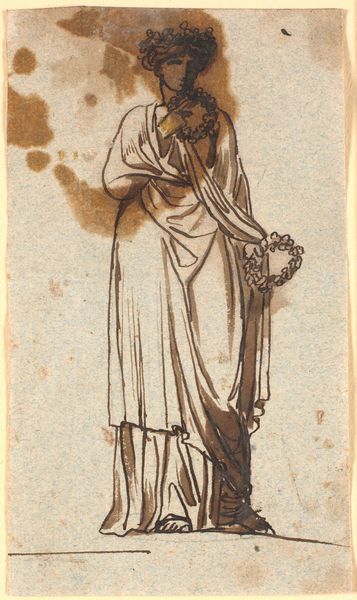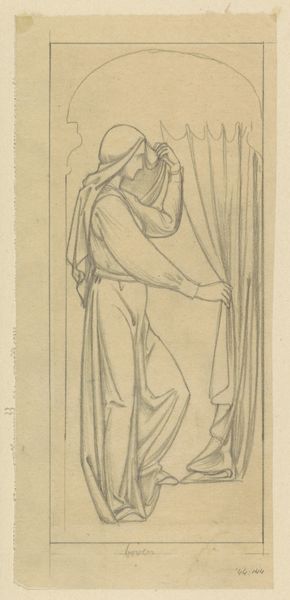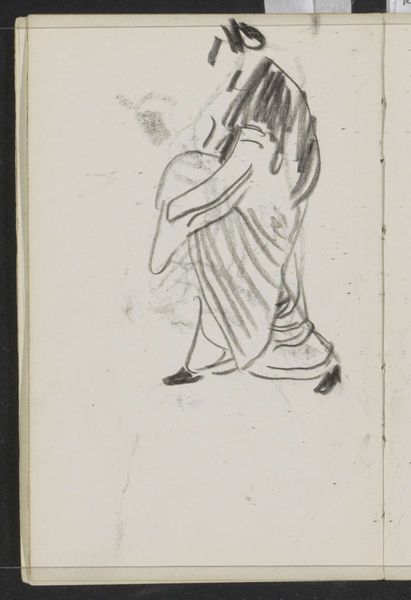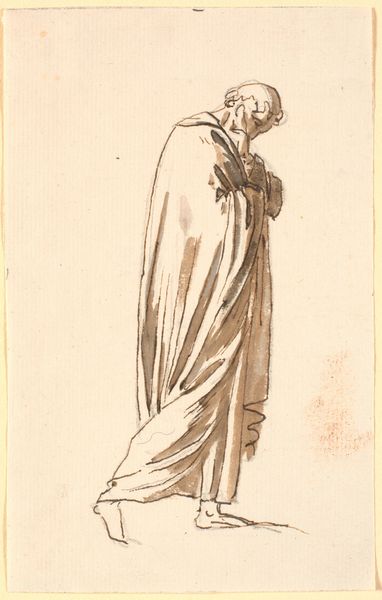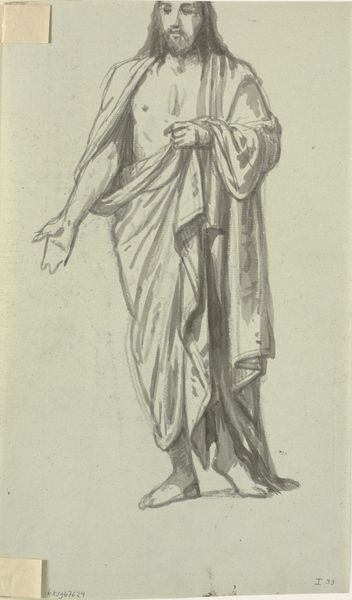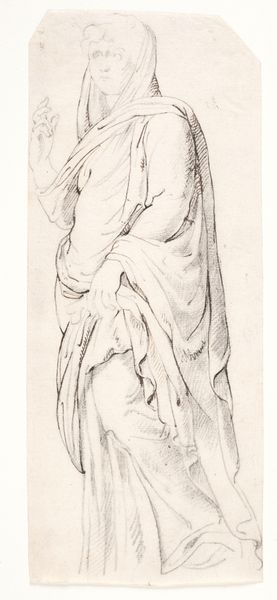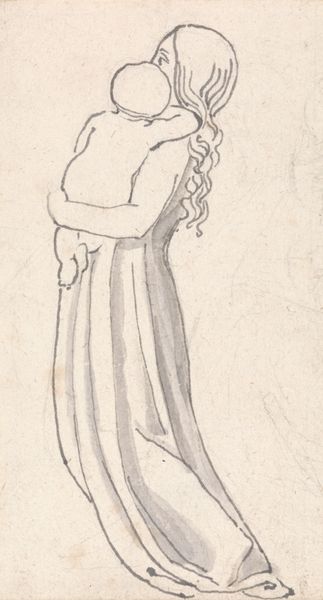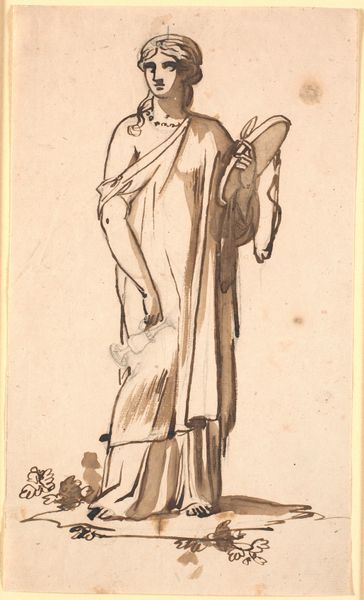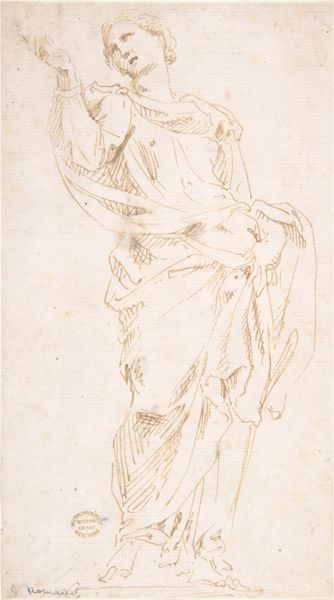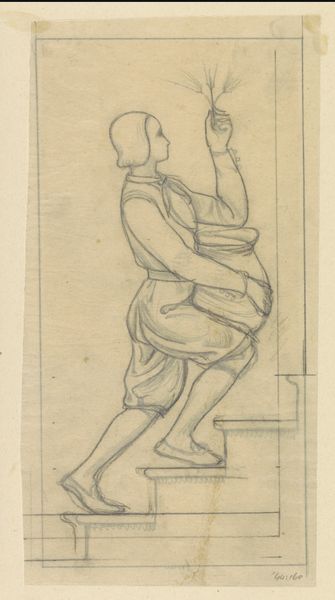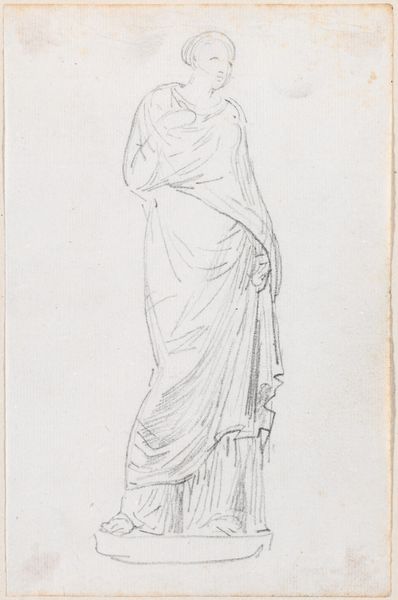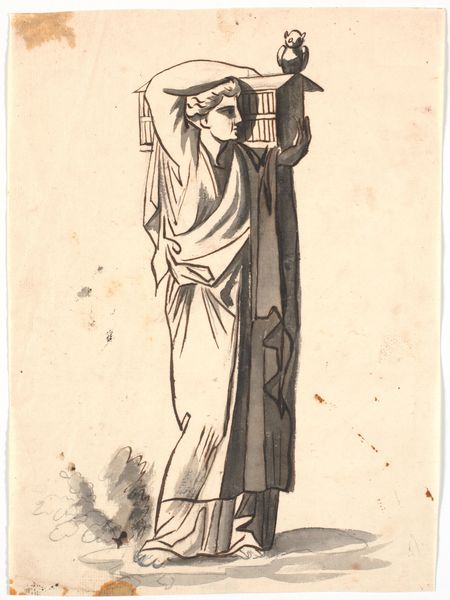
drawing, paper, ink
#
drawing
#
landscape
#
classical-realism
#
figuration
#
paper
#
ink
#
ancient-mediterranean
Dimensions: 199 mm (height) x 109 mm (width) (bladmaal)
Editor: This is "Terpsikore, dansens muse" – or Terpsichore, Muse of Dance – a drawing in ink on paper by Nicolai Abildgaard, created sometime between 1743 and 1809. I find it fascinating how classical and yet unfinished it looks. What kind of symbolism do you see at play here? Curator: This seemingly simple sketch resonates with layers of cultural meaning. The lyre she holds is more than a musical instrument; it’s a symbol of harmony, order, and Apollonian ideals. The drapery, seemingly classical, speaks of a certain grace that was particularly sought after during the Neoclassical movement. Look closely, though. What feelings does it evoke? Editor: I guess… tranquility? There is something very peaceful about her pose, even with just the outlines. But why only an outline? Curator: Consider the cultural memory embedded in line itself. Line is fundamental to form, to thought itself. Is it possible that the "unfinished" nature of the drawing speaks to an enduring human project? Does the symbol endure beyond the need for precise definition? Perhaps Abildgaard wants us to fill in the gaps, to engage actively with the idea of Terpsichore, rather than passively receive a complete image. Editor: So, he provides the framework, and we, the viewers, contribute our own understanding? Curator: Precisely. Think about the fragmented statues and artworks of antiquity that were being unearthed during his time. This may well reflect a meditation on memory, ruin, and cultural recovery. The past is always present. Editor: That's a perspective I hadn't considered. It almost becomes a collaborative piece across centuries. I am really intrigued by how this simple sketch embodies so much more than initially meets the eye.
Comments
No comments
Be the first to comment and join the conversation on the ultimate creative platform.
